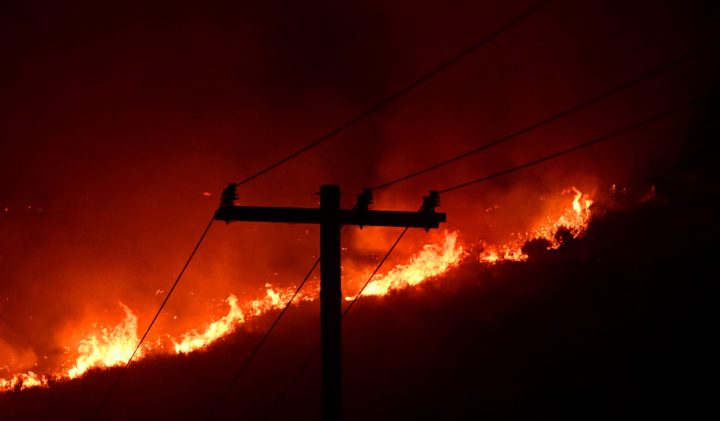
California wants more utilities to bury electrical lines

In California, a bill awaiting Gov. Gavin Newsom’s signature aims to expedite plans to place some electrical power lines underground.
These utility lines can cause fires, some of which have grown to catastrophic proportions like last year’s Dixie Fire, which burned a million acres in northeastern California.
Proponents of the bill say putting power lines underground reduces the risk of more fires sparking because of these lines.
Utilities already spend heavily on trying to prevent overhead power lines from causing fires, said California state senator Bill Dodd. “All the utilities are trying to keep the trees from growing into their lines, from blowing into their lines, and there’s lots of money that’s paid on maintenance,” he said.
Senator Dodd’s district in the Napa Valley is still recovering from wildfires of the last few years. He said Senate Bill 884 would speed up permitting to bury the lines. Utilities that don’t do so fast enough would face fines.
Dodd said over time, undergrounding electrical lines would be cost efficient.
“It would pay for itself in the long run because you wouldn’t have to do the maintenance of the trees,” he said.
But some utility advocates aren’t sure undergrounding lines would pay for itself.
“If you could do it for free, it would be a great idea. But it’s not free,” said Joseph Mitchell, a consultant and utility expert in the San Diego area who estimates burying power lines costs between $3 million and $5 million per mile – and California utility PG&E has a plan to bury 10,000 miles of its lines in fire-prone areas.
Mitchell said he’s concerned the cost burden will fall on ratepayers who can’t afford it.
“People who have low incomes tend to pay a larger fraction of what they earn for electric rates than other people, and they’re going to be impacted more heavily,” he said.
Burying power lines has come up in other parts of the country also dealing with natural disasters.
When wind or ice storms take down lines, undergrounding becomes more appealing, said Larry Blank at New Mexico State University.
“It seems as though the customers are frequently being asked to help with the recovery of costs,” he said.
Critics say in California, there are far more cost-effective approaches to reducing fire risk than undergrounding vast portions of its system.
But PG&E, for one, is proceeding with its plans. And state lawmakers say the bill helps hold them and other California utilities accountable.
There’s a lot happening in the world. Through it all, Marketplace is here for you.
You rely on Marketplace to break down the world’s events and tell you how it affects you in a fact-based, approachable way. We rely on your financial support to keep making that possible.
Your donation today powers the independent journalism that you rely on. For just $5/month, you can help sustain Marketplace so we can keep reporting on the things that matter to you.











